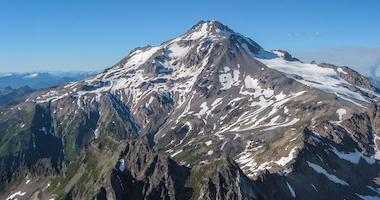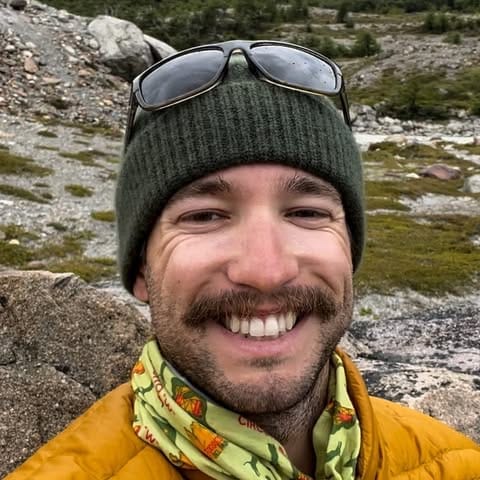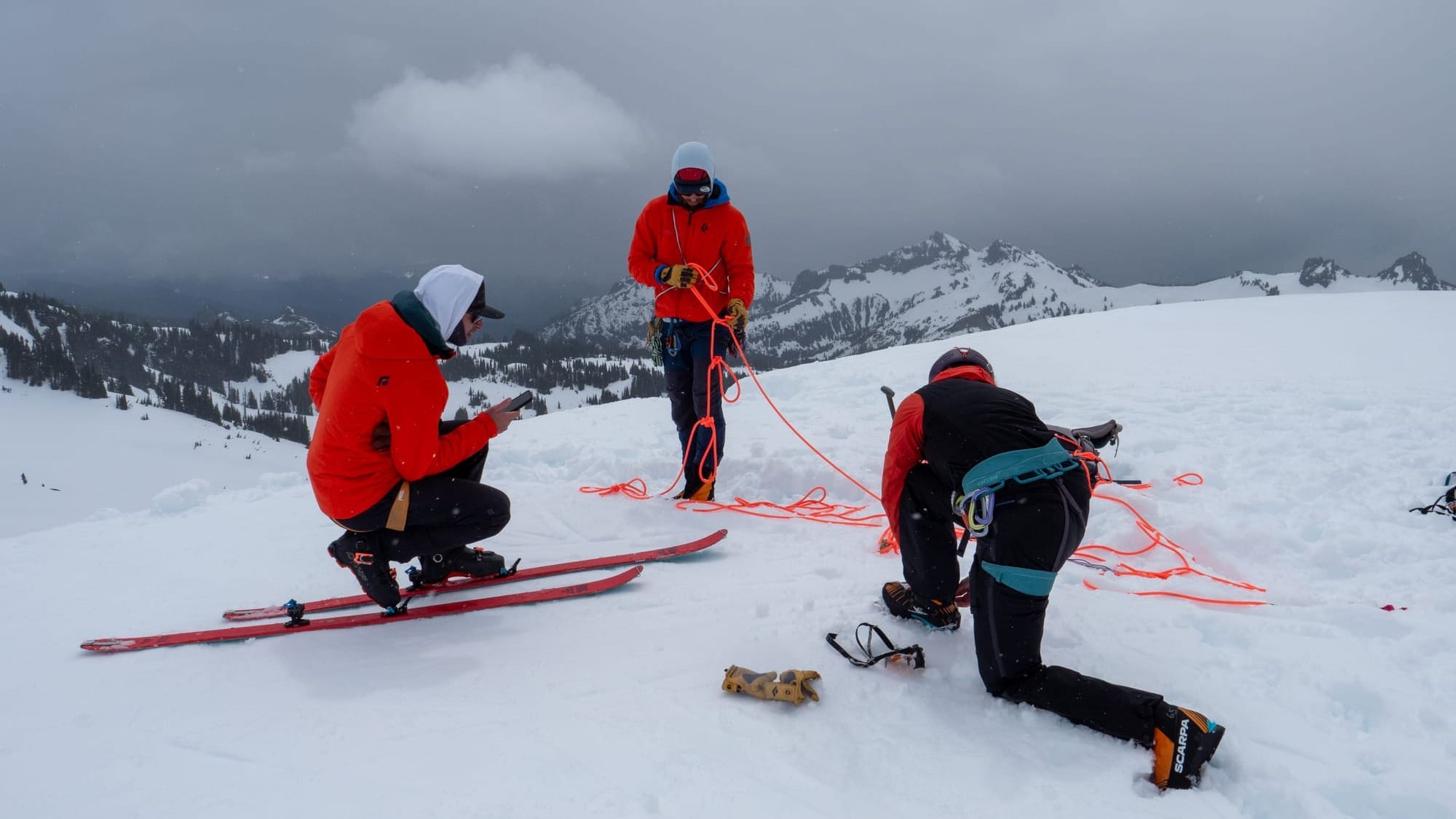At RMI Expeditions, we often say our product isn’t actually the experiences we deliver or the mountains we climb - it’s our guides. When you rope up with an RMI guide, you’re not just getting a passionate mountaineer. You’re tying in a highly trained professional who’s been tested, mentored, and continually developed to lead with skill, confidence, and care. Plus, they’re pretty fun to hang out with!
We take that responsibility seriously. Here’s a look at how we train our guides, starting before they ever lead a trip, and continuing every season they return.
The Foundation: Initial New-Hire Training
Before new guides ever tie in on a rope team with clients, they complete a rigorous, multi-phase training program that blends hard skills, soft skills, and mountain judgment. The curriculum is designed to mirror the AMGA Alpine Skills Course technically, and in many ways, go beyond it by training guides for the specific and demanding environments of Rainier, Denali, and other RMI destinations.
The program kicks off with classroom sessions and field exercises covering:
- Technical skills: crevasse rescue, rope transitions, knots and hitches, snow and ice anchors, belaying, and short-roping
- Navigation and movement: route planning, snowfield travel, pacing, and landmark recognition
- Risk management: hazard assessment, objective vs. perceived risk, emergency protocols, and client-specific risk profiles
- Client care: coaching, communication, pacing, layering, hydration, and the three objective criteria for clients to continue on summit climbs
- Environmental ethics: a full Leave No Trace Level 2 Instructor course is included
New hires are evaluated throughout the training on their professionalism, preparedness, work ethic, and communication, not just their technical ability. A key focus is developing a guide’s judgment and teaching ability in real-time conditions.
Training culminates with the Practical 1 Rescue Exam, where guides must demonstrate their ability to safely and efficiently manage crevasse rescue scenarios, lower clients, and respond to field incidents.
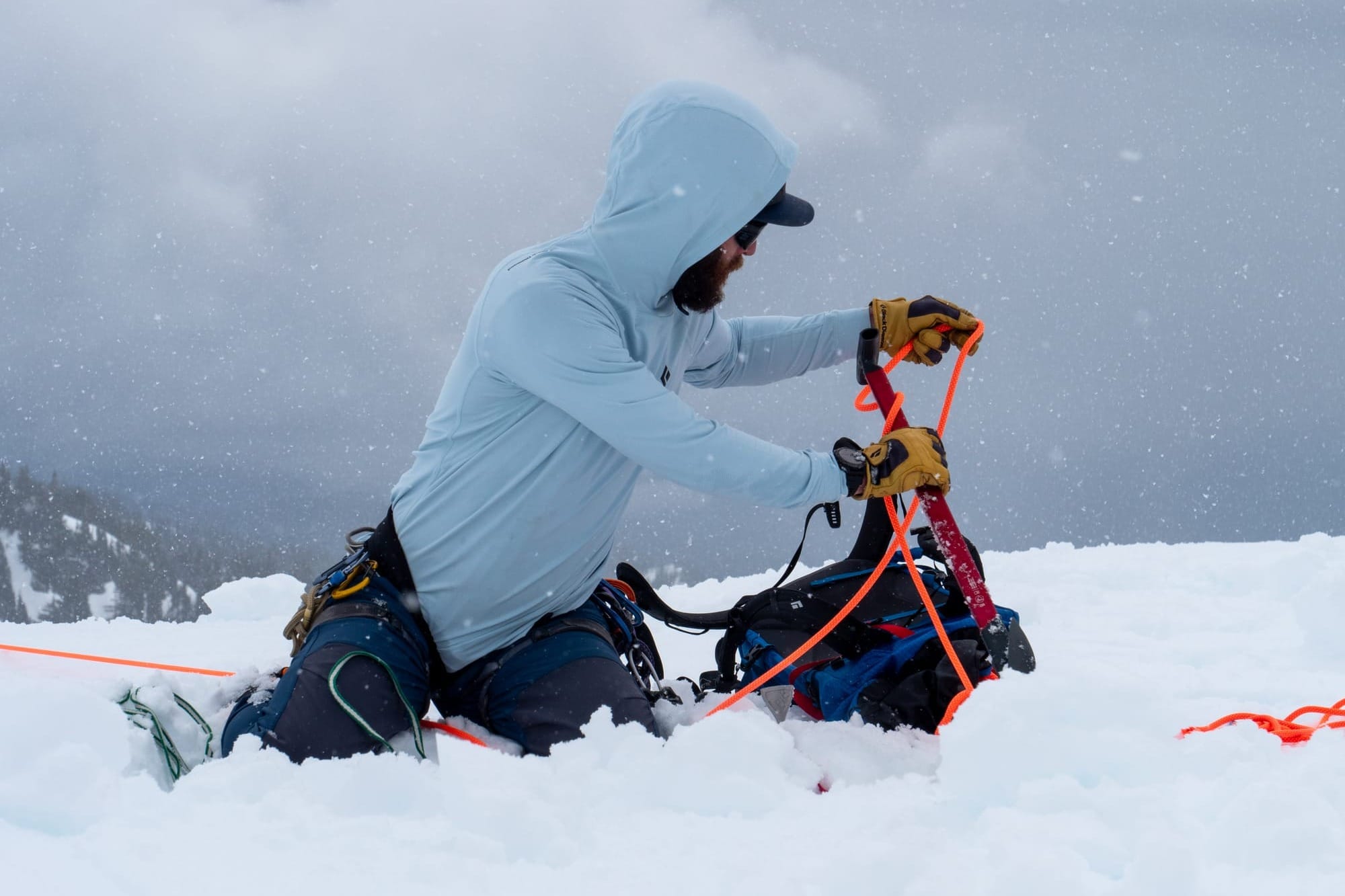
How We Stack Up: AMGA and Our Shared Standards
RMI’s training doesn’t replace AMGA standards - it complements and supports them. The American Mountain Guides Association (AMGA) is the national organization that oversees professional mountain guide education and certification in the U.S. Their internationally recognized standards are part of what defines the modern guiding profession, and we’re proud that many of our guides pursue AMGA training and ultimately work toward becoming IFMGA-certified mountain guides (what we call getting "pinned").
We actively support those goals. To date, we’ve awarded over $100,000 in guide education grants to help our staff pursue AMGA coursework, certifications, and mentorship. From SPI to Rock, Alpine, and Ski Guide tracks, we expect our guides to go further, and we help them get there.
But we also recognize that certification alone doesn’t prepare someone to guide on Mount Rainier or Denali. Our internal training program fills that gap. Designed in collaboration with AMGA-certified instructors, our curriculum mirrors the Alpine Skills Course (ASC) while layering in the specific skills required to succeed in high-volume, high-consequence guiding environments:
- Running summit climbs and climbing schools back-to-back
- Managing teams of diverse abilities in complex glaciated terrain
- Coaching movement and self-care on 12+ hour alpine days
- Real-time decision-making under changing weather and route conditions
In fact, our internal manuals and evaluations were called "among the best in the industry" in our AMGA accreditation report. We don’t see ourselves in competition with AMGA. We’re aligned in the mission: better trained, more professional, more capable guides across the industry.
Our goal is simple: give our guides the tools to grow, both at RMI and beyond.
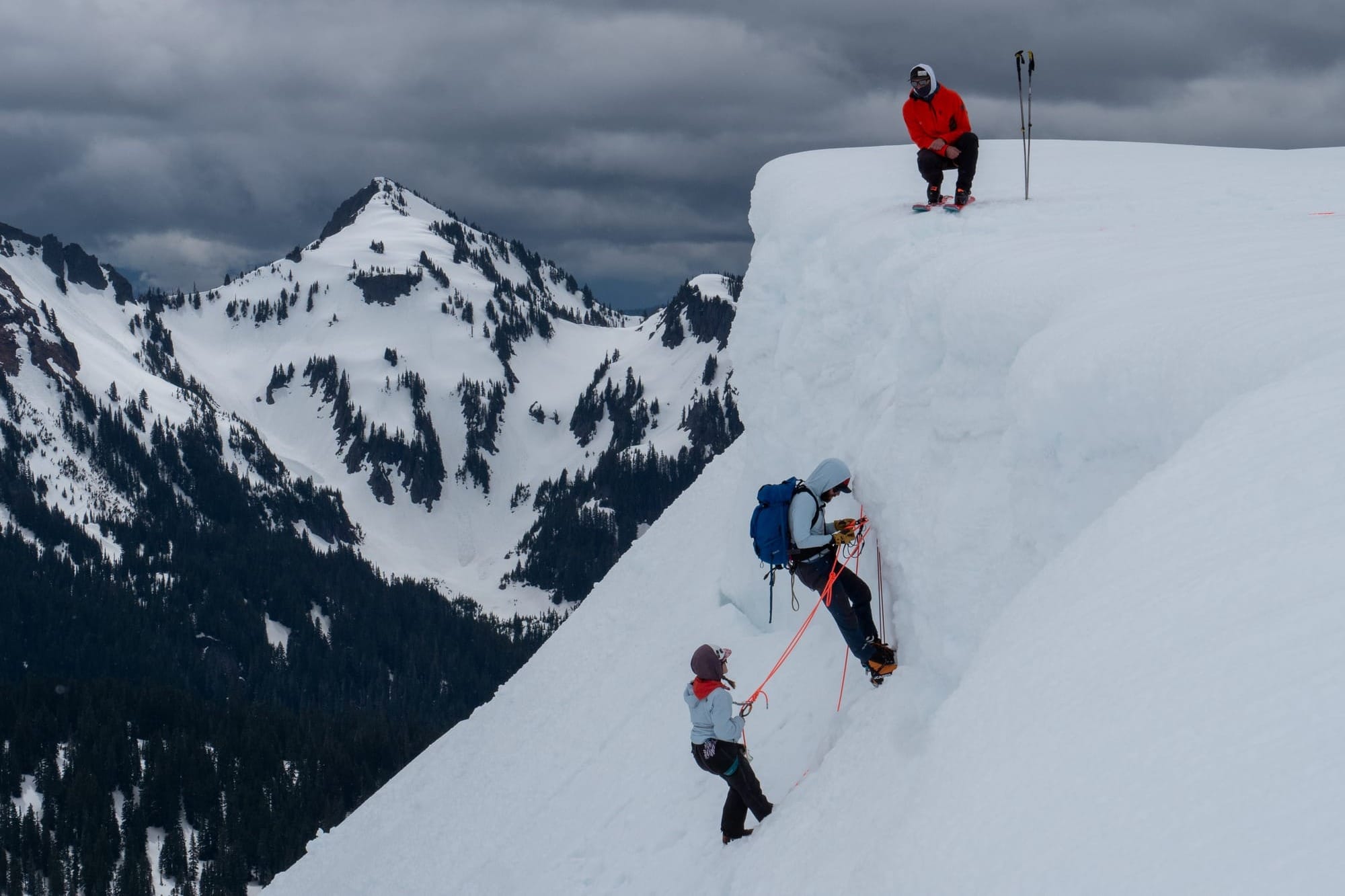
The Path to Leadership: Progression at RMI
At RMI, becoming a lead guide doesn’t happen overnight. Our advancement system is deliberate, structured, and performance-based.
Step 1: Assistant Guide
After completing new hire training and Practical 1, guides begin working as assistants. They shadow and support lead guides, practice teaching climbing schools, and gain mileage on summit climbs.
Step 2: School Lead Qualification
Before leading a Mountaineering Day School, guides must:
- Complete Practical 1 and the Level 1 Written Exam
- Assist on 5 - 10 Schools, teaching each core skill multiple times
- Receive positive evaluations from at least two lead guides
- Pass a supervised School Lead Evaluation
Step 3: Lead Guide Progression
To move from Associate to Lead Guide, they must:
- Complete 10+ summit climbs
- Pass the Level 2 Written and Practical Rescue Exams
- Maintain current Level II or III Avalanche Certifications
- Lead a climb to the satisfaction of a supervisor
- Undergo regular feedback and reviews
These milestones ensure our guides lead with skill, experience, and a deep understanding of RMI’s guiding philosophy.
Growing Beyond Guiding: Career Pathways at RMI
At RMI, guiding isn’t just a summer job. For many of our staff, it’s a career, and we’ve built advancement pathways to support that. Beyond the lead guide level, experienced guides can step into specialized leadership roles that expand their impact and increase their earning potential.
Supervisors
Supervisors are experienced lead guides who help shape RMI’s culture and set the tone for the guiding team. They mentor new guides, facilitate soft skills training, and model the professionalism and judgment we expect from every team member. Longtime RMI icons like Dave Hahn and Brent Okita exemplify what great supervision looks like: grounded, supportive, and deeply committed to both people and process.
Route Finders
While all guides participate in route maintenance, designated Route Finders take the lead in navigating Mount Rainier’s evolving glacial terrain. These guides - like Casey Grom - are essential to our success. They scout routes, assess hazards, and help increase our margin of safety, which gives our clients the best chance at reaching the summit. Their work is often quiet but critical.
Mountain Managers
Mountain Managers operate as the bridge between our guide team, office staff, and executive leadership. It’s a hybrid role that includes mentorship, schedule coordination, on-mountain risk management, and staff development. Guides like Dominic Cifelli do everything from running morning meetings to hiking to Camp Muir to assess conditions or support teams, these leaders are the glue of the operation.
They also take on HR responsibilities, manage workloads, help resolve issues, and lead training initiatives throughout the season. The position comes with a dedicated day rate on top of guide pay, recognizing its strategic importance to our programs.
Together, these roles offer a roadmap to help make guiding a long-term profession. They show what’s possible when talent, leadership, and opportunity come together in the mountains.
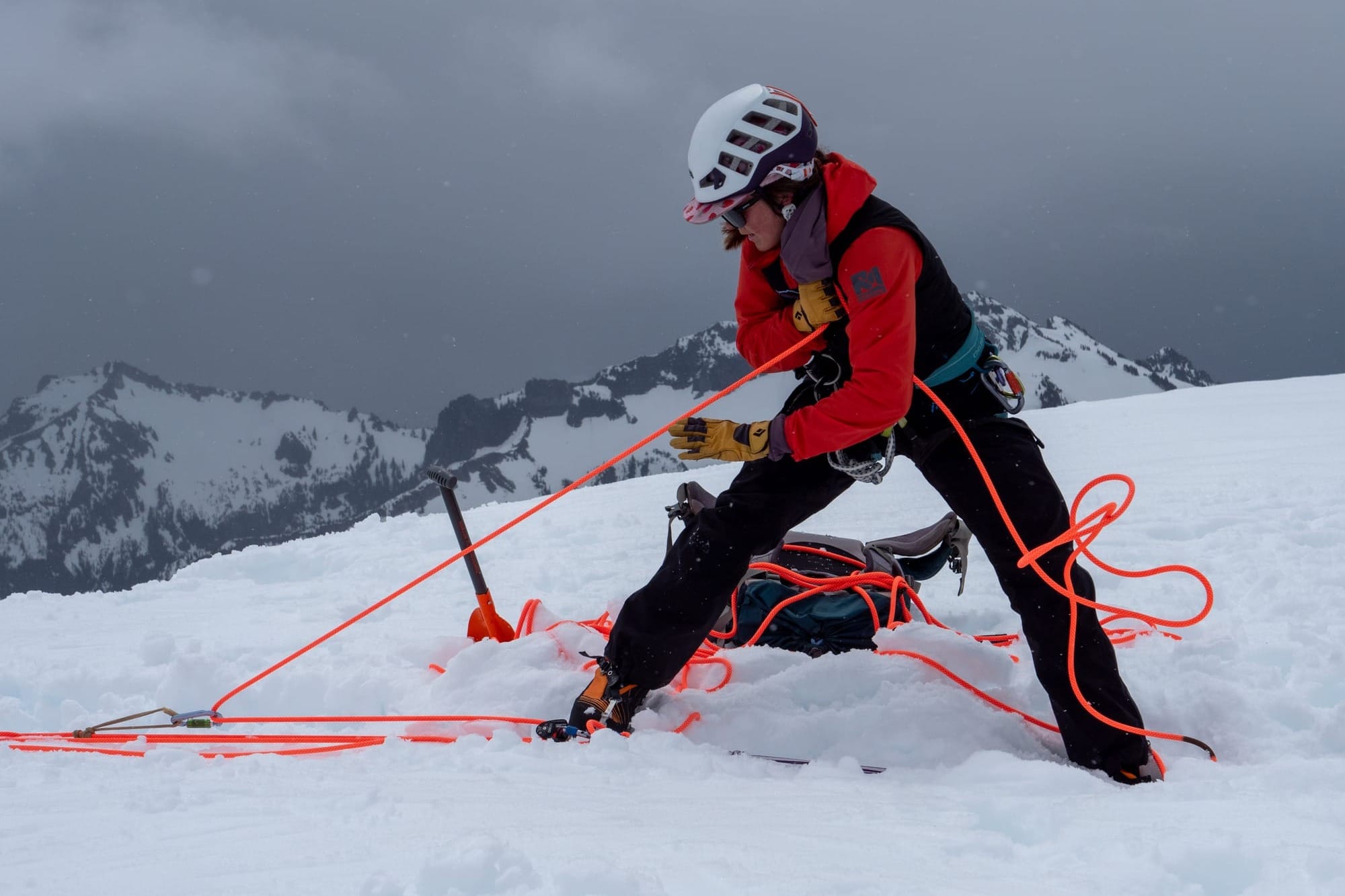
Beyond the Rope: The Soft Skills That Matter
Being a great guide isn’t just about knots and anchors - it’s about presence. From day one, we coach our guides how to be empathetic, accessible, and caring. This includes:
- Lead briefings and manage expectations
- Support clients who are struggling, whether physically or mentally
- Give coaching that’s timely, clear, and confidence-boosting
- Adapt to different learning styles and group dynamics
- Handle client turns, pacing problems, and tough descents
We teach new guides how to think critically, anticipate needs, and navigate the subtle balance between safety and success. They learn to speak up about risk, communicate effectively with lead guides, and model professionalism in everything from gear checks to campsite chores.
While technical skills are hugely important to be a successful guide, it’s the soft skills that differentiate between a good climber and an excellent guide. Bottom line; if you don’t like people, you shouldn’t be a mountain guide.
Training Never Ends: Continuing Education
Initial training is just the start. Guides further develop their hard and soft skills via continuing education. Each guide is required to have at least 18 hours of continuing education per year. During the summer climbing season, we conduct weekly continuing education courses in the evening from 6-9 PM. Topics include:
- Medical scenarios
- Scenario-based rescue drills (like Practical 2)
- Short roping and transitioning techniques
- Female-focused guide workshops
- Human Resources training
- Personal Protective Equipment (PPE) classes
- Avalanche refreshers
- AMGA prep clinics
- Peer-reviewed mock climbs
- Informal skills sessions with IFMGA guides
- National Park Service Climbing Ranger combined training
In addition to this continuing education, we have required certifications that we often offer for reduced rates to guides. These include Wilderness First Responder (WFR) recertifications, Search and Rescue (SAR) training, and Leave No Trace Workshops. More importantly, we create a culture where curiosity, humility, and improvement are celebrated, not just expected.
Why This Matters for You
When you climb with RMI, you’re trusting us with more than your summit attempt; you’re trusting us with your safety, your experience, and, honestly, your life. That’s why we invest so heavily in guide development. We know that a strong, well-prepared guide can turn a challenging climb into a transformative experience.
So the next time you clip onto a rope with us, know this: your guide has trained extensively for it. Not just once, but continually.



